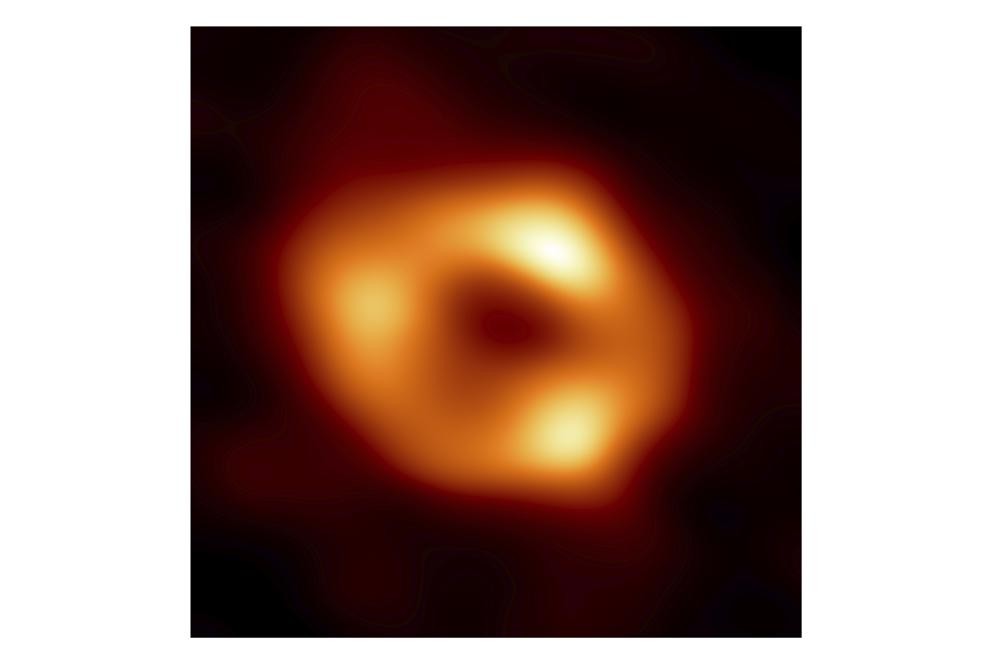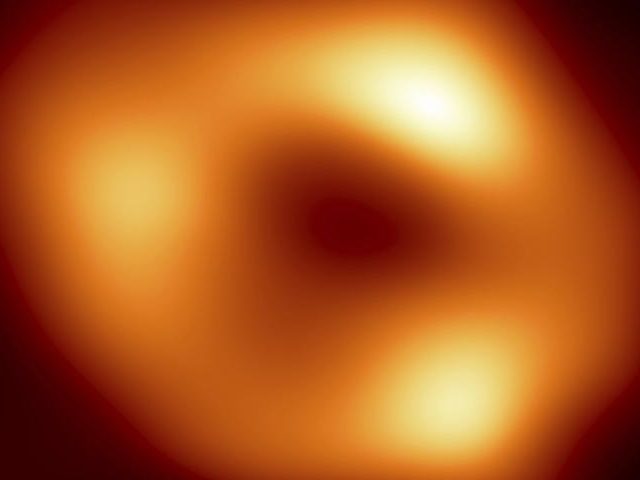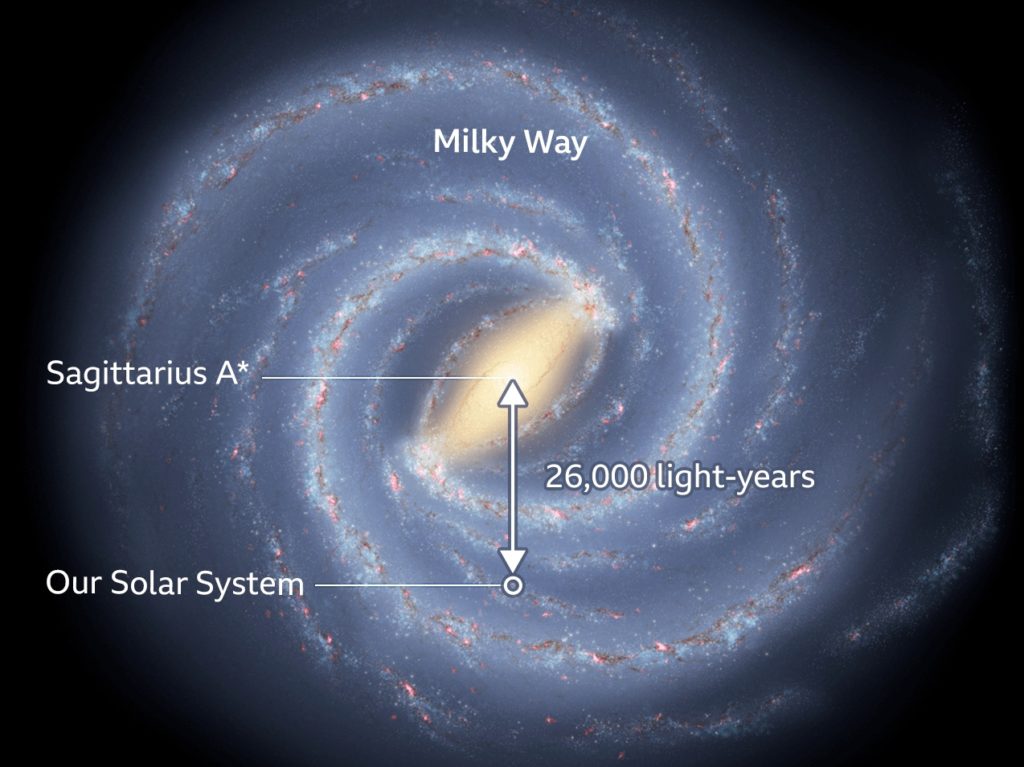Ever wondered about just what the huge black hole long thought to be at the very center of the Milky Way looks like? Here’s your chance.
Astronomers are calling it a “gentle giant” on a near-starvation diet with a fuzzy outline (see above) belying the depth of the field in front and behind the fuzzy images.
AP reports astronomers believe nearly all galaxies, including our own, have these monster black holes at their heart, where trapped light and matter make it extremely hard to get images of them.
The Milky Way black hole now revealed is called Sagittarius A*, near the border of Sagittarius and Scorpius constellations. It is four million times more outsized than our sun.
Light gets chaotically bent and twisted around by gravity as it gets sucked into the abyss along with superheated gas and dust, scientists describe. The report continues:
The colorized image unveiled Thursday is from the international consortium behind the Event Horizon Telescope [EHT], a collection of eight synchronized radio telescopes around the world. Previous efforts had found the black hole in the center of our galaxy too jumpy to get a good picture.
The University of Arizona’s Feryal Ozel called the black hole “the gentle giant in the center of our galaxy” while announcing the breakthrough. Black holes gobble up galactic material but Ozel said this one is “eating very little.”
For scale, the ring is roughly the size of Mercury’s orbit around our star.
That’s about 60 million km, or 40 million miles, across.
“What’s more cool than seeing the black hole at the center of our own Milky Way,” said Caltech astronomer Katherine Bouman at a press conference to reveal the image.
This is not the first black hole image. The same group released the first one in 2019 and it was from a galaxy 53 million light-years away. The Milky Way black hole is much closer, about 27,000 light-years away.
A light year is 5.9 trillion miles.
The project cost nearly $60 million with $28 million coming from the U.S. National Science Foundation, with scientists quick to praise the result.

The above image was released by the Event Horizon Telescope Collaboration, Thursday, May 12, 2022. It shows a black hole at the center of our Milky Way galaxy. The Milky Way black hole is called Sagittarius A*, near the border of Sagittarius and Scorpius constellations. It is four million times more massive than our sun. The image was made by eight synchronized radio telescopes around the world. (Event Horizon Telescope Collaboration via AP)
“This new image is special because it’s our supermassive black hole,” said Prof Heino Falcke, one of the European pioneers behind the EHT project.
“This is in ‘our backyard’, and if you want to understand black holes and how they work, this is the one that will tell you because we see it in intricate detail,” the German-Dutch scientist from Radboud University Nijmegen told BBC News.


COMMENTS
Please let us know if you're having issues with commenting.